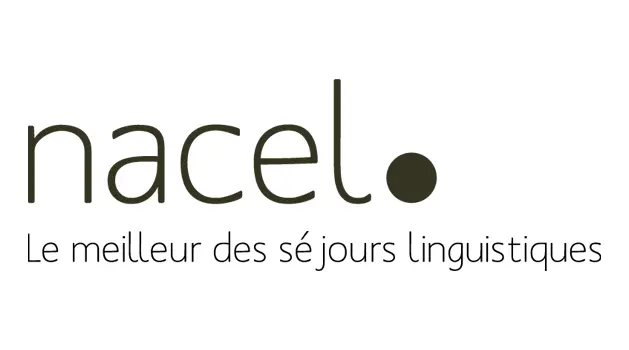
The basics of Arabic grammar: our guide for beginners
 Learn now
Learn now
Summary
of the page
>
Introduction to Arabic grammar
>
The basics of Arabic grammar
>
Beginner level: Arabic grammar
>
Common mistakes in Arabic grammar
>
How to improve your Arabic grammar
>
Learn Arabic grammar with the Serious Game
Vous souhaitez vous initier à la grammaire arabe ? Ne cherchez plus ! Notre guide complet vous présente les fondamentaux de la grammaire arabe spécialement conçu pour les débutants. Que vous soyez motivé par la découverte d'une nouvelle langue ou que vous ayez besoin de communiquer avec des proches, notre guide vous offre un apprentissage agréable, inspirant et facile à suivre. Grâce à des explications claires et concises, vous apprendrez les règles grammaticales de base en acquérant des compétences essentielles pour construire des phrases correctes en arabe. Ne manquez pas cette occasion de vous lancer dans learning Arabic avec confiance et détermination. Rejoignez-nous dès maintenant et découvrez les merveilles de cette langue fascinante !
Introduction to Arabic grammar
Introduction to Arabic
Arabic is one of the oldest and richest languages in the world. Its origins go back more than 1,500 years. It is spoken by over 420 million people around the world, making it the fourth most spoken language in the world. most widely spoken languages. Arabic is the official language of 22 countries and is also the liturgical language of Islam, the second most widely practised religion in the world. Its complexity and beauty lies in its unique structure and subtle nuances. Arabic is known for its elegant calligraphy, rich vocabulary and complex grammatical system. However, once mastered, Arabic grammar opens a window onto a fascinating culture and history. Learning Arabic can therefore be an enriching and fulfilling journey.
Why learn Arabic?
Learning Arabic has many advantages. Firstly, it's an excellent way of broadening your cultural horizons. The Arabic language is the key to understanding the rich traditions, literature, music and art of the Arab world. Secondly, Arabic is the fifth most widely spoken language in the world, which means that mastering it can open the door to job opportunities in a variety of sectors such as commerce, diplomacy, journalism and much more. Thirdly, Arabic is the language of the Koran, which makes it an essential language for people of the Muslim faith or for those who wish to understand Islam in greater depth. Finally, learning Arabic can be a stimulating challenge for your brain. Arabic's unique writing system and complex grammatical structure can help to improve your cognitive abilities and develop more sophisticated thinking. and develop more flexible and creative thinking.
The basics of Arabic grammar
Word order in a simple sentence
Arabic grammar, known as "nahw" in Arabic, is a system of rules that governs how words are formed and combined to form sentences. There are three types of word in Arabic: the noun (ism) the verb (fi'l) and the particle (harf). Each of these words has specific characteristics and follows different rules. For example, nouns and verbs in Arabic are modified according to gender, number and case. Moreover, Arabic is an inflectional language, which means that words are modified to reflect different grammatical aspects such as tense, aspect, mood, voice, and so on. What's more, unlike English Arabic is written from right to left. Understanding these basic rules is essential for constructing correct sentences and communicating effectively in Arabic.
Understanding Arabic genders
In Arabic grammar, gender is an important grammatical characteristic that affects the form of nouns, adjectives, verbs and pronouns. Arabic mainly distinguishes between two genders: masculine and feminine. For example, the word "student" is translated as "Talib" for a man and "Taliba" for a woman, showing how gender influences the form of the word. Similarly, adjectives and verbs are also modified according to the gender of the subject. gender of the subject. For example, the word "intelligent" is translated as "dhaki" for a man and "dhakiya" for a woman. It is also important to note that certain nouns in Arabic are intrinsically masculine or feminine, regardless of the sex of the entity they represent. Understanding gender distinctions in Arabic is crucial to using words correctly and constructing grammatically correct sentences.
The verb system in Arabic
The verb system in Arabic is one of the most complex aspects of Arabic grammar. Arabic verbs are structured around patterns of roots and forms. Each verb in Arabic is based on a three-letter root that conveys a general concept. For example, the root "k-t-b" conveys the concept of writing. By adding vowels and other letters to this root, we can create a variety of words related to writing, such as "kitab" (book), "kataba" (he wrote), "kaatib" (writer), and so on. In addition, Arabic verbs are conjugated according to tense (past, present and future), gender, number and mood. They are also divided into two voices: active and passive. Understanding the Arabic verb system takes time and practice, but it is essential for expressing a variety of actions and states in Arabic.
Beginner level: Arabic grammar
Consonants and vowels
L'arabe est une langue sémitique qui utilise un alphabet composé principalement de consonnes. Il y a 28 lettres dans the Arabic alphabet , the majority of these are consonants. Vowels in Arabic are generally unwritten and are indicated by diacritical marks placed above or below the letters. There are three basic vowels in Arabic a", "i" and "u". They can be short or long. Short vowels are often omitted in writing, while long vowels are written. For example, the Arabic word "kitab" (book) is written without the short vowels, i.e. "ktab". vowels, i.e. "ktb". The consonants in Arabic include sounds that do not exist in many other languages, which gives Arabic its distinctive sound. In addition, some letters change shape depending on position in the word, which is another unique feature of Arabic.
Arabic sentence structure
Sentence structure in Arabic differs from that of many European languages. In Arabic, the order of words in a sentence is generally subject, verb, object (SVO), but it can also be verb, subject, object (VSO). For example, the sentence the sentence "The boy is eating an apple" can be structured in Arabic as "Al-walad ya'kul tuffaha" (SVO) or "Ya'kul al-walad tuffaha" (VSO). In addition, adjectives in Arabic generally follow the noun they modify, unlike in English where they precede the noun they modify. where they precede the noun. For example, "a big house" is "bayt kabeer" in Arabic. In addition, it is important to note that Arabic uses a declension system, which means that the ending of a word can change depending on grammatical function in the sentence. Understanding Arabic sentence structure is crucial to constructing correct sentences and to better understanding this complex language.
Basic vocabulary
When learning Arabic, it's essential to start with basic vocabulary. This includes common greetings, such as "Marhaba" (Hello), "Shukran" (Thank you), and "Ma'assalama" (Goodbye). It is also useful to to know numbers, days of the week, months, colours, and common nouns. For example, "waHid" means one, "ithnayn" means two, and "thalaatha" means three. The days of the week in Arabic begin with "Al-Ahad" (Sunday) and end with "As-Sabt" (Saturday). The basic colours include "ahmar" (red), "azraq" (blue), and "aswad" (black). Learning common phrases and idioms can also be very useful. useful. For example, "Kayf halak?" means "How are you?" and "Ma ismuka?" means "What's your name? Enriching your vocabulary is a crucial step towards becoming proficient in Arabic.
Common mistakes in Arabic grammar
Common pitfalls for beginners
Learning Arabic presents certain challenges for beginners. One common mistake is failing to take into account gender and number differences. For example, Arabic has separate forms for the masculine and feminine, and for the singular, dual and plural. Failing to modify a word according to these aspects can lead to grammatical errors. What's more, the word order in Arabic can be confusing for beginners, as it differs from that in of many other languages. Another common mistake is ignoring short vowels, which are not usually written in Arabic, but which are crucial for the correct pronunciation of words. In addition, Arabic uses a different writing system and is written from right to left, which can be difficult to master at first. It is important to be aware of these common pitfalls in order to avoid them and improve your Arabic learning.
How to avoid common mistakes
To avoid common mistakes in Arabic grammar, here are a few useful tips. First, make sure you practise regularly. Practice is the key to mastering a new language. Secondly, use a variety of learning resources, including grammar books, language apps, and online courses. They can help you understand grammar rules and see how they are applied in different contexts. In addition, try to immerse yourself as much as possible in the language. as possible in the language. Listen to Arabic music, watch films and TV programmes in Arabic, and try to talk to native speakers. This can help you gain a better understanding of the language and improve your your pronunciation. Finally, don't be afraid to make mistakes. Mistakes are part of the learning process, and they are a valuable opportunity to learn and improve.
How to improve your Arabic grammar
Beneficial tools for learning Arabic
Learning Arabic can be made easier by using a variety of tools and resources. First of all, Arabic grammar textbooks are invaluable resources. They explain grammar rules in detail and provide numerous examples. In addition, there are many language apps that offer interactive lessons in Arabic. Apps such as Duolingo, Rosetta Stone, and Babbel can help reinforce your Arabic vocabulary and grammar. In addition, websites such as BBC Languages offer free online courses in Arabic. For those who prefer face-to-face learning, enrolling on an Arabic course at a local university or language school can be very beneficial. Finally, the use of flashcards or revision applications such as Anki can help you memorise vocabulary and grammar rules. By using these tools, you can considerably improve your Arabic grammar and make faster progress in your learning.
Practising reading and writing in Arabic
Reading and writing are essential skills for mastering Arabic grammar. By reading regularly in Arabic, you can improve your understanding of the text, expand your vocabulary and strengthen your grammar. You can read books, newspapers, online articles, or even posts on social networks in Arabic. What's more, writing in Arabic allows you to practise and consolidate what you've learnt. Try writing simple sentences at first, then gradually move on to more complex texts. You can write newspapers, letters, stories, or even posts on social networks in Arabic. What's more, using an Arabic spellchecker can help you identify and correct your mistakes. Finally, don't forget to practise reading and writing in Arabic regularly. As with any skill, the key to improvement is constant practice.
Learn Arabic grammar with the Serious Game
The innovative Serious Game makes learning Arabic grammar interactive and fun. Suitable for all levels, it offers a variety of exercises for personalised progress. This method transforms the study of Arabic grammar into a motivating experience. The Serious Game makes learning Arabic grammar easier by using games to reinforce concepts and provide immediate feedback. Users appreciate its fun and effective approach, which results in tangible and rapid progress in Arabic grammar.
Your questions
on learning Arabic
Can I learn Arabic on my own?
Which countries speak Arabic?
How can I learn Arabic at home?
How do you say hello in Arabic?
What's the best way to learn Arabic?
What kind of Arabic should I learn?
Language Club
The blog that tells you everything about languages


Language Club
The blog that tells you everything about languages


All languages to learn
Certification preparation courses available

Toeic
They learned a new language with Globe Speaker





L'esprit du site est très bien pensé avec un itinéraire. Cela donne envie d'en savoir plus.

Marie-Anne • 41 ans
Niveau A1 à B1 - Abonnement Premium





J'ai apprécié de travailler sur la plateforme Globe Speaker, autant de fois que je le voulais ou pouvais, ainsi qu'avec Maria pour la partie coaching.

Véronique • 41 ans
Niveau A2 à B2 - Abonnement Premium CPF





Rien à redire, super.

Florian • 24 ans
Niveau A1 à A2 - Abonnement Standard





Plateforme très pédagogique, et adaptée à tous les âges. J'ai vraiment eu l'impression d'apprendre.

Maria • 28 ans
Niveau A1 à B1 - Abonnement Premium





Ravie et très heureuse d'avoir pu atteindre les objectifs fixés. Une équipe attentive et bienveillante, qui donnent les moyens aux élèves de réussir.

Isabelle • 34 ans
Niveau A2 à B1 - Abonnement Premium




































